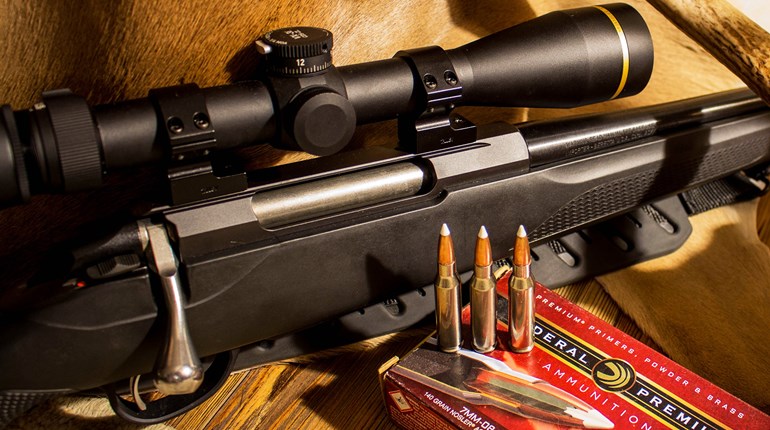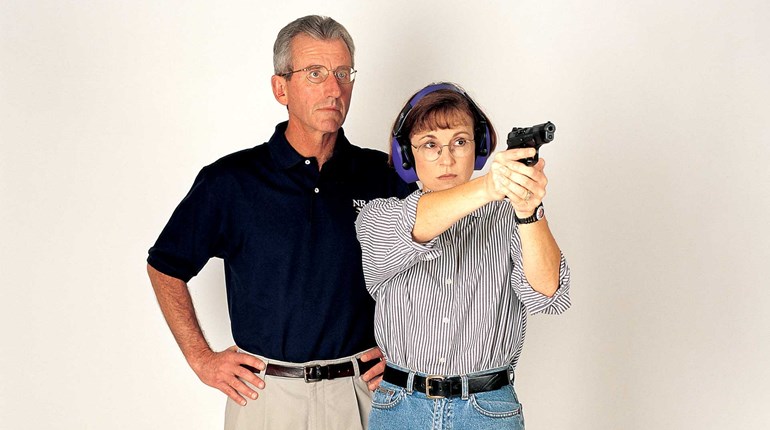
It’s odd to need to talk about shooting stance in the context of concealed carry, especially when you consider that the Carry Life is all about moving securely through the rigors of daily life. But the reason to do so is simple: Comfort often drives our stance when we shoot, but is only a useful concept in the sense of enjoying your training. It’s a bad one—often very bad—in the sense of preparing to, and then having to, defend yourself. If there’s one thing you’re unlikely to do when faced with aggression, it’s stand comfortably still.
That said, the urge to be comfortable is not illogical. It’s the body’s way, after all, of signaling postures and movements that avoid injury and conserve energy. A difficulty arises from the Carry Life perspective, however, in the transition from Yellow or Orange to Red state of situational awareness. Another problem that can stem from stance but which applies to movement appears when your grip becomes compromised (here and here). While such severity is rare, it can be destructive enough to actually interfere with firearm operation. Once again, not a good thing.
Getting your stance squared away is an essential precursor to banishing these problems.
Generally, stance resolves into one of three types. The first (and likely original) is the one-handed grip and presentation that is now rarely seen outside of formal bulls-eye competition. In this stance, only the strong hand touches the pistol and the same-side arm and body present to the target. Essentially, you stand sideways, stick out your arm toward the target, and turn your head over your shoulder to align the sights. The other hand is generally in the shooter’s pocket, or the thumb looped on the belt. This is a perfectly reasonable stance for competition and a paced rate of fire, but is wholly inadequate as a planned defensive shooting position. While it’s natural to seek a comfortable stance when we shoot, this is only a good idea in the sense of enjoying training.
The Weaver stance and its variations comprise the second stance “family.” It’s an interesting bit of pistoleering history to understand what is and is not Weaver. Severe “blading” of the body was popular beginning in the late 1940s and is often attributed to Weaver, but if you look at Jack Weaver himself in photographs and a demonstration (here), you’ll see that this was not his method.
The bladed stance to which we refer turns the body nearly 180 degrees, and presents the weak side to the target with the weak side foot foremost. The strong arm is straight across the chest, with the hand either supported (“tea-cupping”) by the weak hand, or pressed against the weak hand (“push-pull”). The idea of blading was to present a smaller target to someone shooting at you, and this was its only desirable attribute.
In almost every other sense, it creates problems. People who use this stance defend its supposed stability, but beyond a first shot, we just don’t agree. Almost every aspect of this posture makes it slow to transition to any movement toward cover/concealment, and if you do get hit, it’s likely to be devastating—transecting both lungs, for instance. Either weak hand technique (tea-cupping or the "pull" in push-pull) is also counter-productive: If you think it through, you’ll discover that you’re augmenting recoil vectors, not suppressing them.
Actual Weaver is much better. It comprises a rough quarter- to half-turn off perpendicular toward the target on the weak side (weak side foot forward of the strong side), the pistol at shoulder level, and the “collapsed” grip we favor (here). What’s best about Weaver is this foot position. First, you have a diagonal path (the hardest type for an aggressor to track) of both advance and retreat that you can power into: for a righty, forward and left off the trailing right leg, and backwards and right off the leading left leg. It’s opposite, of course, if you’re a lefty. If you choose Weaver, we recommend that the feet be farther apart (slightly greater than shoulder width) and the knees slightly more bent than was traditional, but here, comfort adds value.
The second advantage is protecting the firearm. The cant of the torso makes a snatch at the firearm difficult (though your assailant is arguably way too close already if this occurs). Fouling of a draw is also difficult. The second is a bit legalistic, but we have personal knowledge of several instances where it has worked. The slight turn of the hand, arm and torso that precedes a draw from Weaver foot position are unmistakable in their meaning: “A gun will shortly appear!” Aggressors have correspondingly disappeared, pre-empting the risk of a brandishing accusation if law enforcement becomes involved (your carry firearm may never be drawn, or even exposed).
Some faults of Weaver are addressed in the Isosceles stance. Here, the feet are square beneath the torso and the knees are more bent. The chest is and remains perpendicular to the target. At the conclusion of the draw stroke, the arms are of nearly even extension with the sights in front of the master eye. This body position is where the stance gets its name: The arms form the equal, longer sides of an isosceles triangle, with the base of the figure being described by an imaginary line between the feet.
Troubles with Isosceles can begin in the amount of arm extension. The propensity—in the never-ending quest for sight stability—is to stick the arms straight out. Especially for lightly built shooters expecting recoil, this can become an out-and-out lean forward, and tends to create a skeletally based model of recoil absorption, rather the muscular model of recoil dissipation. The fix is elementary: Pull that pistol back toward you and let those elbows stick out.
This has multiple benefits, but the most important is the ability to press your palms together. This traps most of the recoil energy forward of the elbows, which not only restores sight picture sooner for any follow-up shot, but also, in a semi-auto, keeps energy “in the gun” and reduces the likelihood of malfunctions.
What we recommend, you can probably guess—the best aspects of both Weaver and Isosceles There’s one more “tune” of the Isosceles stance that we highly recommend. The stance tends to bring out the “tactical turtle” in some of us: that is, the ducking of the head down to the sight plane, rather than bringing the pistol up to the eyes. (To be fair, Weaver can too—even adding an unhelpful head tilt toward the strong side arm.) This is usually the combination of too much of both knee bend and arm extension.
What we recommend, you can probably guess—the best aspects of both Weaver and Isosceles. For hand position, Isosceles is superior, allowing us to do that first “P” (press the palms) better than the somewhat loose-armed and grip strength-dependent Weaver. True, it means slightly unequal arm extension, but we posit this a good thing: You can press even harder with the weak side hand if you wish. This relieves the duty of the strong side hand somewhat, enhancing the delicacy of that third “P”—trigger press.
For foot position, we prefer Weaver’s weak side foot slightly downrange of the strong side foot. This preserves a strong, ready, harder-to-track line of advance or retreat compared to Isosceles’ cross-footing, “dug-in” tendency, where strong egress is limited to directly right or left for the first crucial step at least. Under heavier recoil, or in long strings of fire, the perpendicularity of Isosceles to the axis of recoil can also create a temptation to lean in. This is a bad plan because you’re effectively digging your feet in even more. Believe it or not, it is ballroom dancing’s concept of poise forward that is the solution: Muscle tension is directed forward, but not weight balanced forward (which actually requires rearward muscle tension if you think about it, and hence tends to slightly reinforce recoil force vectors).
We recollect that we now have you standing still in a Carry Life world, one in which we posited movement as a priority. Never fear: We’ll get there presently.
For now, Carry on.
Read Part II here


































